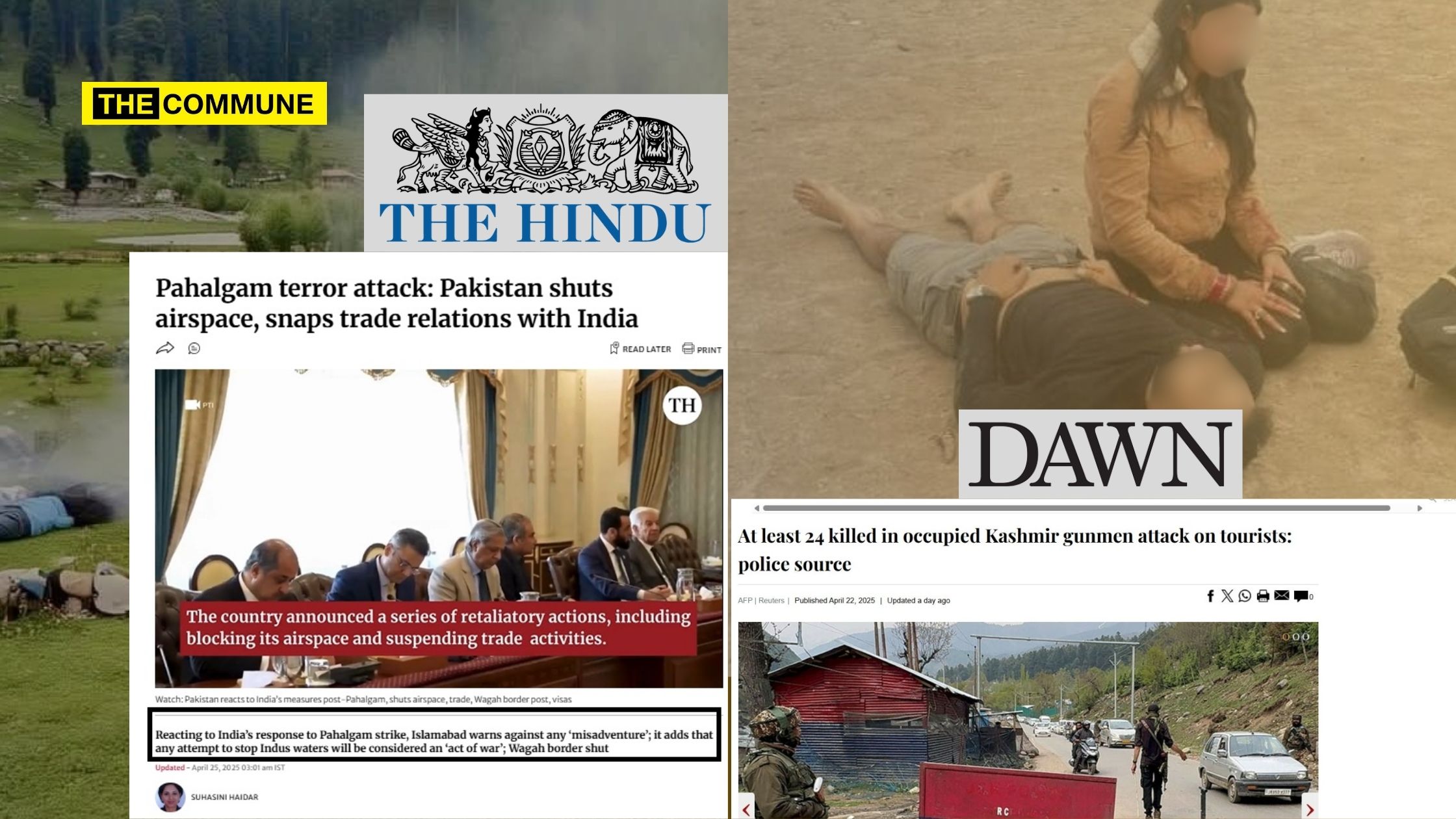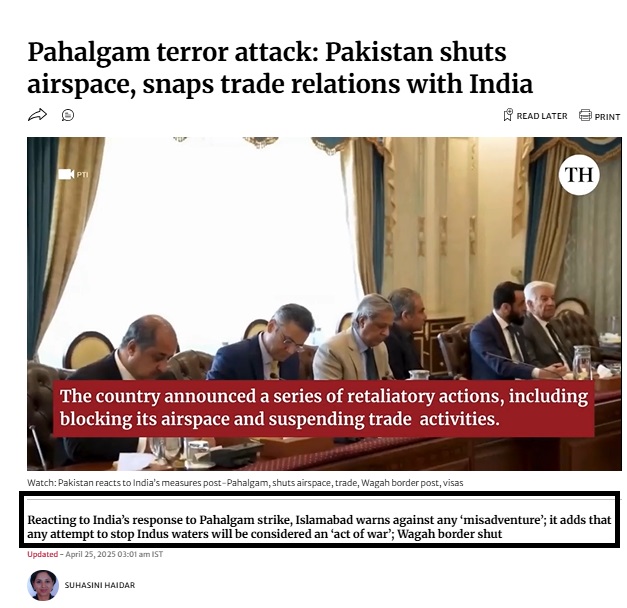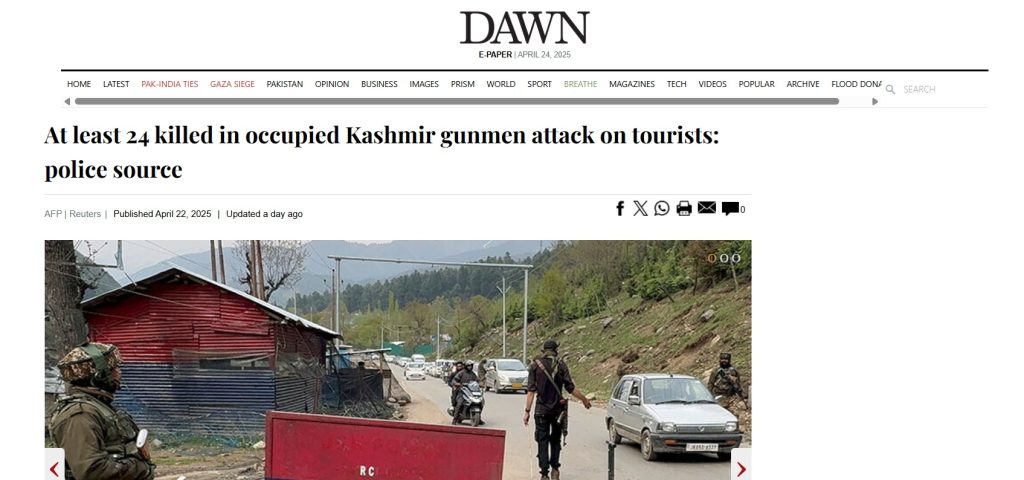
In the wake of the Pahalgam terror attack that killed 28 civilians in Jammu and Kashmir, The Hindu, one of India’s national dailies, has come under scrutiny for its choice of language in a news report written by Suhasini Haider. The newspaper’s use of the term “Pahalgam strike” in headlines and reports has drawn criticism on social media and from sections of the media fraternity, with some accusing it of downplaying the severity of the incident.

Critics argue that the phrase “Pahalgam strike” lacks the directness of terms like “terror attack” or “massacre,” which have been used by other national outlets in their reporting. The concern is that such terminology, whether deliberate or editorially standardised, may appear to soften the nature of the violence—especially when unarmed civilians were targeted.
Comparisons have also been drawn between The Hindu‘s editorial tone and that of Pakistan’s English daily Dawn, which similarly used the term “Pahalgam strike” in its coverage. This has led to allegations that The Hindu’s language aligns too closely with the narrative coming out of Pakistan, where the government has condemned the attack but simultaneously warned India against any “misadventure” in response.
Does it not seem like the headlines of the Dawn edition in Islamabad pic.twitter.com/W6pEuh3KoK
— S Gurumurthy (@sgurumurthy) April 25, 2025
The attack carried out by terrorists affiliated with the Pakistan-based Lashkar-e-Taiba group, has prompted a series of retaliatory diplomatic steps from India, including revoking visas issued to Pakistani nationals and suspending parts of the Indus Waters Treaty. Pakistan, in turn, has shut its airspace to Indian aircraft and closed the Wagah border.
How Dawn Reported The Terror Attack A Few Days Ago
Pakistan’s Dawn newspaper referred to the attackers as “gunmen” and repeatedly avoided using the term “terrorist.” The newspaper even denied Jammu and Kashmir as an integral part of India, instead referring to the region as “Indian-Occupied Kashmir” (IOK). It further added to the narrative by calling the assailants a “little-known group” rather than acknowledging them as well-established terror outfits with ties to Pakistani insurgents. Dawn’s coverage also downplayed the significance of the attack by calling the region a “Muslim-majority area” and framing the terrorists’ actions as part of a “Kashmir Resistance.

Language used in headlines and reports not only informs public understanding but can also shape perceptions about accountability and severity.
Subscribe to our channels on Telegram, WhatsApp, and Instagram and get the best stories of the day delivered to you personally.




